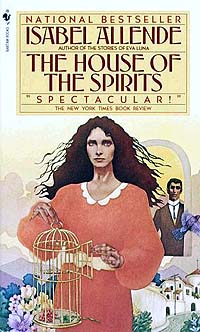|
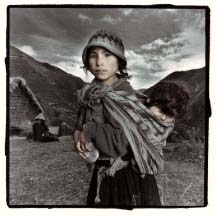 "Enduring Spirit" Phil Borges see below for more information
I was born over a half-century ago in the Southern Hemisphere, before television made its appearance. It was a quiet life in a provincial atmosphere, bounded by the streets of our neighborhood. I thought that everyone was like us, except for the poor people I saw from time to time when we drove out into the country, and who filled me with a mixture of pity and fear. They seemed different, as if they lived in another dimension. The first time I had any hint of the size and complexity of the world was when one of my uncles returned from India. He was the only person in the family, probably in the whole city, who had traveled so far from home. He had set out in search of the 999 names of God and returned a skeleton with eyes of an illuminati, with no luggage but a few yellowing notebooks in which he had recorded his impressions. We children would sit at his feet and listen to his stories of faraway peoples, amazing customs, landscapes of stunning beauty, and temples of multiple gods. This prodigious uncle was the professor of a crystal ball. It was, I suppose, only a simple glass sphere, one of those things fishing boats use as floats for their nets, but he convinced us that in it we could see any point on earth. His words were so eloquent and we children were so hypnotized that in fact we did believe we saw reflected in that magical ball all the visions summoned by our uncle. Thanks to him, I developed an uncontainable curiosity about other cultures that has taken me many places around the globe, and today I can say, like the great Mexican writer Octavio Paz, that it is our ethnic and cultural diversity-our differences in language, customs and beliefs-that provide the strength, resiliency and creativity of our species. An incredible capacity for adapting to the environment has allowed the human race to live in the eternal ice of the North Pole, the arid dunes of the Sahara, the sweltering forests of the Amazons, or the translucent heights of the Himalayas. Before every challenge of nature, small clans of humans seek a way to utilize the resources at hand and learn to survive. The social organization also must adapt to circumstances. Among the ancient inhabitants of the Arctic, where women were very scarce, offering one's spouse to the traveler so that he would spend a warm and happy night was a gesture of basic hospitality, whereas among the polygamous tribes of the desert, a single glance at another man's woman meant death. How could a man from the extreme north understand the idiosyncrasy of a Bedouin? How to explain to a wanderer of the Sahara what happens in an igloo during the long night of a polar winter? 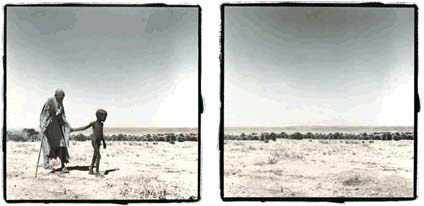 Unfortunately, it is this same diversity, the source of the strength that has allowed us to exist for thousands of years, that nourishes intolerance, hatred, and war. We fear everything that is different, and fear turns us into aggressive beasts. With the exception of religious fanaticism, ethnic conflict is the principal cause of much of the world's hostilities. When the Soviet Union was dismantled, for example, we saw the emergence among nation states of hatred that had lain buried for decades. The atrocities committed in Bosnia against persons who until only shortly before had been neighbors and friends of the perpetrators prove how deeply rooted human aggression can be when turned against those who are not like us. It is much easier to see small differences than to see great similarities. Yet what would humankind be like if we were all the same? We wouldn't be. It's possible that we would have perished as a species. Carried to the extreme, uniformity would finally destroy us. The young people of today, unlike the girl I was, do not need the crystal ball of an eccentric uncle to imagine the world; in this communication age, we have instant connectedness. Movies and television programs about foreign cultures have made even the remotest tribes familiar. Today there are very few places on earth that have not been explored. In 1996, one of the last Amazon tribes still to be exposed to the outside world was spotted from the air. Television and movie cameras recorded the event from helicopters. While the enormous metal birds descended from the sky above Brazil, roaring and stirring up hurricane-force winds, the naked warriors below readied their poisoned darts. A few months later, these same warriors were walking around in tennis shoes, and their blow guns and darts were being sold in the tourist shops of Manaos. I bought some to bring home, and now they hang on my office wall to remind me every day of the existence of peoples threatened with extinction. I am fully aware of the destructive power of cultural penetration, which is the most insidious form of imperialism. What is the solution? It is not a matter of artificially isolating ethnic groups that are not a part of what -- with great arrogance -- we call civilization. It is a question of moving forward with great caution and respect, so that this encounter will take place on equal terms. It is true that we have science and technology that native societies may lack, but it is no less true that they possess profound spiritual resources, natural wisdom, and knowledge of their physical surroundings that we have lost. The mode of life of the industrialized countries of the West, this thing we call progress, is wiping out cultures at a terrifying rate. Cultures that have survived for hundreds -- sometimes thousands -- of years soon will have disappeared. A recent study made by the linguist Ken Hale of the Massachusetts Institute of Technology estimates that 3,000 of the 6,000 languages that exist in the world are fated to die because they are no longer spoken by children. The fragile oral traditions that have preserved ancient knowledge are being lost. When the Amazon tribes forget their languages, their shamans' enormous wisdom regarding medicinal plants will be gone; with the death of the traditions of the Australian Aboriginal peoples, a powerful psychic practice still unplumbed by modern science will also die. The new generation turns its back on its ancestors, its traditions, its languages, dazzled by the ephemeral brilliance of progress. Young people abandon their families and set out for the great cities, pursuing an illusion. Most of them end up as marginal beings who never truly benefit from the modern world and yet cannot return to their villages, because they no longer belong there, either. As a people, they do not disappear; they live on, but the very essence of their culture is extinguished, leaving them shadows of what they once were and shadows of those they want to imitate in the developed world. 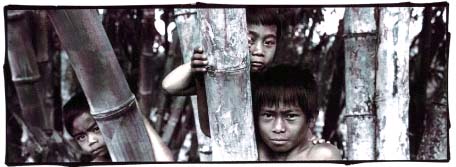 To help indigenous peoples preserve their cultural heritage, we must first recognize its value. Borges, who has spent much of his life traveling to this vanishing world, recounts that he will never forget his first trip to Mexico in the late 1960s. There, any pretext served as a reason for a fiesta. People had time to gather together in markets during the day and in the plaza at night, singing, making music, celebrating. Children ran around freely, playing and shouting, with no one watching over them, because there was no danger. Old people sat talking in groups, while adolescents strolled around arm in arm. He tells how when he returned to the United States, he saw the terrifying loneliness of his culture from a new perspective. When he got onto a bus, he noticed the silence, the space among the riders, their systematic way of avoiding eye contact and, with greater reason, physical contact. In any public place we see the same thing; every person seems isolated inside a magnetic field. We are alone in a crowd. Between 1960 and 1990, the number of adults living alone tripled in the United States, and when the state and institutions fail, as so often happens, the weak are the first to suffer the terrible consequences. Every year an alarming number of solitary elderly people die without anyone even being aware of it. Their deaths are discovered when the neighbors complain about the smell! I wonder how many American children have never even seen their grandparents. We have lost a lot with progress. Im most of the so-called Third World, large families are the rule. Few people would survive otherwise. One's life depends on relationships, on that web of connections composed of relatives, friends, and neighbors. Every society must develop mechanisms for protecting that part of the population tat needs the greatest help, from children and the aged to women, the ill and disadvantaged, and the most desperately poor. In many parts of the world that protection is provided by people, not the state. Social security is guaranteed by the family, not by a plan or an institution, as happens in developed countries, where we must pay for the care of children, our elderly, the weak and ailing, and where we also pay for emotional assistance, even companionship. In societies other than ours, that means the elders have a respectable position in the community: their experience and wisdom are treasured. It also means that in extended families children are the responsibility not solely of their parents but of their many relatives and, in the larger sense, the village. Borges says that in Africa he photographed a woman who nursed her baby, then passed him to another woman, who also gave him her breast and in turn passed him to a third mother, who fed him and rocked him until he fell asleep. Children carry their younger brothers and sisters on their backs. There is so much touching!
It would be naive to suggest that at the threshold of the year 2000, when the pace of life is every day faster and more intense, we should go back to the tribal traditions and large families as the solution to individual isolation and the cruelties of our social system. Most members of indigenous and endangered cultures live for generations in the same spot; we are constantly on the move. It is estimated that Americans move -- often out of state -- an average of every five years. We lack the "sense of place" that characterizes indigenous peoples, and this is not something we can acquire artificially, by simply willing it. But now that it is lost to us, we should at least admire it and try to preserve it in other societies. Although there are many positive aspects of these cultures, we should not ignore the problems. As a woman, I am horrified at the treatment my sisters receive in some tribes: they suffer genital mutilation; their fingers are amputated in mourning rituals for dead relatives; they are sold as slaves; they are beaten in male-initiation rites; they are forbidden to marry again if widowed, to be educated, to possess goods, even to move about freely. There are more women who have never gone farther than a hundred meters in any direction from their huts, others who spend their lives shrouded from head to foot in a mantle with only a hole at the level of their eyes. Everywhere in the world, women are the poorest of the poor. I come from a large family in which interpersonal connections are very strong. I grew up following a strict code of honor, within a system of traditions that today is considered antiquated. It was expected that each member of the family would be responsible for others; that no one would move up without helping those left behind; that no one would run the risk of doing anything that would stain the honor of our name. We had the responsibility to look out for anyone who shared our blood, even if the relationship was a distant one. Now that I live in the United States, I can see that this is not always an advantage. To develop my personality fully, I had to abandon my "tribe" and my "village". In my case, the terms are exaggerated, but they illustrate my point. During the time that I was watched over and directed by my relatives, always fulfilling my duties as a daughter, mother, wife, sister, even as the eldest grandchild of my grandfather, I could not really break loose and fly. Despite my rebellion against the patriarchal system into which I was born, I would never have cut myself off from my family voluntarily. It took a military coup that unleashed brutal repression to cause me to leave my country. Alone, without roots and in a foreign land, I tested my creativity for the first time and found within me a strength I did not know I possessed. My calling as a writer was born of exile. By offering this personal example, I want to illustrate that the system of community, which has managed to preserve the indigenous and endangered cultures photographed by Phil Borges for this book, has the drawback of limiting personal aspirations and freedoms. 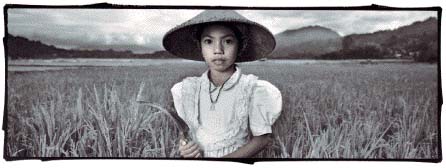 Unfortunately, all too frequently indigenous peoples and endangered groups, because they are marginalized by modern society and because they lack political or economic power, are prey to the greed and negligence of governments and corporations who consider them irrelevant. As a consequence, these people are subjected to the worst abuses of human rights; their villages and temples are destroyed; their lands are invaded; their freedom is taken from them; they are subjected to every humiliation and form of violence; they are obliged to abandon their customs, their languages, and often their religious beliefs and to become refugees and beggars. Day after day, these people are losing the battle to preserve their identities. Day after day, the human race is losing another portion of the diversity that has been the source of its strength and resiliency. If I had my uncle's crystal ball and could see into the future, I would wish for the next millennium to be an era of peace. Bending over the crystalline sphere, I would hope for a world in which there is a true community of peoples, nations, and tribes, where human rights apply to all. I would hope for a future when we will beautify the earth, this magnificent blue marble dancing through the astral space in which it is our fate to live. The richness of the human race lies in its diversity. Progress is not based on uniformity; rather, the opposite is true: the preservation of diverse cultures brings progress. Life is pluralism, distinctness, transformation. Only death is the same for all. In this beautiful book Phil Borges celebrates, with his images and stories, life as it is lived and shared in so many places on out fragile and beautiful planet. How fitting for these images to be associated with the 50th anniversary of the Universal Declaration of Human Rights, the first document that recognizes and protects our differences, the first document to honor the inherent dignity of all peoples.
|
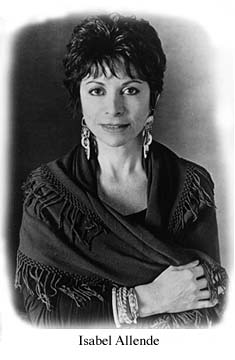 Before coming to the United States,
I had never heard the term "terrible twos" used to
refer to a child of that age, and I didn't know that adolescence
was a long period of martyrdom. In growing up, my children passed
through stage after stage without any dramatic crisis, and when
a crisis did arise it was diffused in the context of a large
family in which each individual had his or her own problems and
there were many people to help.
Before coming to the United States,
I had never heard the term "terrible twos" used to
refer to a child of that age, and I didn't know that adolescence
was a long period of martyrdom. In growing up, my children passed
through stage after stage without any dramatic crisis, and when
a crisis did arise it was diffused in the context of a large
family in which each individual had his or her own problems and
there were many people to help.
